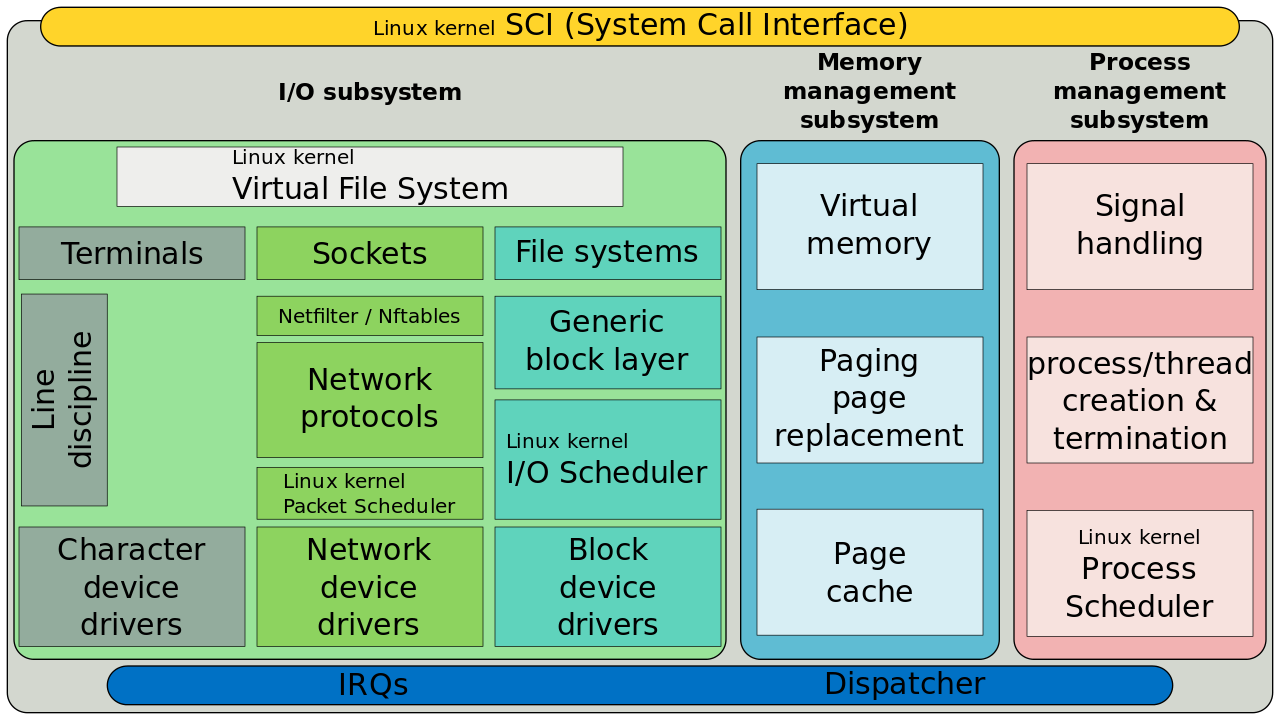Welcome to the world of Linux, a powerful and versatile operating system that has revolutionized the way we think about computing. In this article, we will delve into the depths of Linux, exploring its origins, key features, and why it has become the go-to choice for tech enthusiasts, developers, and even major corporations. So, fasten your seatbelts as we embark on a journey to understand the Linux operating system like never before.
Introduction to Linux

At its core, Linux is based on the Linux kernel, which is an essential part of the operating system. One of the key advantages of Linux is that it is free and open-source software, meaning that anyone can access and modify the source code for their own purposes. This openness has led to the development of numerous Linux distributions, each tailored to specific needs and preferences.
One of the distinguishing features of Linux is its command-line interface (CLI), which allows users to interact with the system using text commands. While this may seem intimidating to beginners, it offers a high level of control and flexibility once you become familiar with it. Additionally, Linux distributions often come with a graphical user interface (GUI) that provides a more user-friendly experience, similar to other operating systems like MacOS and Microsoft Windows.
Installing Linux on your computer is a straightforward process, thanks to the availability of installation programs. Linux distributions like Ubuntu provide step-by-step instructions to guide you through the installation process. Once installed, you can customize your Linux system by installing additional software packages using a package manager. This allows you to tailor your system to your specific needs, whether it’s for programming, web development, or gaming.
Linux is not limited to desktop computers or laptops; it is also used in various other devices and systems. From servers and supercomputers to embedded systems and smartphones, Linux powers a wide range of devices. Its stability, security, and ability to handle complex tasks make it a popular choice for these applications.
Another advantage of Linux is its strong emphasis on security. Linux is known for its robust security features, which make it less vulnerable to malware and other types of attacks compared to other operating systems. This is particularly important in today’s digital landscape, where cyber threats are becoming more sophisticated.
Understanding open source

Open source refers to software that is freely available for anyone to use, modify, and distribute. This concept is at the core of the Linux operating system, which is built on the principles of open source development.
Open source software, including the Linux kernel, is created and maintained by a community of developers who collaborate and share their code. This allows for continuous improvement and innovation, as anyone can contribute to the development process.
One key advantage of open source software is its flexibility. With Linux, users have the freedom to customize their operating system to suit their needs. This is in contrast to proprietary operating systems like Microsoft Windows or MacOS, where users are limited to the features and functionality provided by the software vendor.
To get started with Linux, you’ll need to choose a Linux distribution. A distribution is a complete operating system package that includes the Linux kernel, along with a collection of software and tools. Popular distributions include Ubuntu, Fedora, and CentOS.
Installing Linux is typically straightforward, with many distributions providing user-friendly installation programs. Once installed, you’ll have access to a command-line interface, where you can interact with the operating system using text commands. This can be a little intimidating for beginners, but with some practice, it becomes second nature.
Linux also offers a variety of graphical user interfaces (GUIs), such as Xfce, KDE, and MATE, which provide a more familiar point-and-click environment. These GUIs make it easy to navigate the system, launch applications, and manage files.
One of the key benefits of Linux is its package manager. A package manager is a tool that simplifies the process of installing, updating, and removing software on the system. With a package manager, you can quickly and easily install thousands of applications from a central repository.
In addition to being free and customizable, Linux is also known for its security and stability. The open source nature of the operating system means that vulnerabilities and bugs can be quickly identified and patched, reducing the risk of malware and other security threats.
Choosing the right distribution

1. Purpose: Determine the purpose of your Linux installation. Are you using it for personal use, such as browsing the web and word processing, or are you setting up a server for hosting websites or running databases? Different distributions are tailored for specific purposes, so choose one that aligns with your goals.
2. User-friendliness: Consider your level of experience with Linux. If you’re a beginner, look for distributions that offer a user-friendly interface and easy installation process. Some popular options for beginners include Ubuntu and Linux Mint, which provide a familiar desktop environment similar to Windows.
3. Hardware compatibility: Ensure that the distribution you choose supports your computer’s hardware. Linux has come a long way in terms of hardware compatibility, but it’s still important to check if your specific components, such as graphics cards or wireless adapters, are supported by the distribution you’re considering.
4. Software availability: Assess the availability of software packages for the distribution. While most Linux distributions offer a vast selection of free and open-source software, some may have a larger community and repository of packages than others. Research the software you need and ensure it is readily available for the distribution you’re interested in.
5. Community support: Consider the strength and size of the distribution’s community support. A strong community can provide valuable resources, forums, and documentation to help you troubleshoot issues and learn more about Linux. Look for distributions with active forums and a large user base to ensure you have access to support when needed.
Remember, choosing a Linux distribution is a personal preference, and what works for one person may not work for another. It’s always a good idea to try out a few different distributions before committing to one. Many distributions offer live USB or CD versions, allowing you to test them out without installing anything on your computer.
By carefully considering your needs and preferences, you can choose the right distribution for your Linux journey. So, take the time to research and experiment with different options to find the one that suits you best. Happy Linux exploring!
Installing Linux and software
To begin, you will need to choose a Linux distribution that suits your requirements. There are many popular distributions available, such as Ubuntu, Fedora, and Debian. Each distribution has its own unique features and advantages, so it’s important to research and select the one that best fits your needs.
Once you have chosen a distribution, you can proceed with the installation process. Most Linux distributions provide a user-friendly installer that guides you through the setup. You will need to create a bootable USB or DVD with the installation files and then follow the on-screen instructions to install the operating system on your computer.
During the installation, you will be prompted to partition your hard drive. This allows you to allocate space for the Linux operating system and any other software or data you want to install. It’s important to carefully plan your partitions to ensure efficient disk usage and organization.
After the installation is complete, you can start installing software on your Linux system. Linux uses package management systems, such as apt or yum, to simplify the installation process. These package managers allow you to easily search for and install software from a vast repository of applications.
To install software using the package manager, you simply need to open a terminal and run the appropriate command. For example, if you want to install a web browser, you can use the command “sudo apt install firefox” on Ubuntu-based distributions. This will download and install Firefox on your system.
In addition to using the package manager, you can also manually install software on Linux. This involves downloading the software’s source code and compiling it on your system. While this method provides more flexibility and customization options, it requires a deeper understanding of the Linux command line and development tools.
It’s important to keep your Linux system up to date by regularly installing updates and patches. These updates not only improve the performance and security of your system but also provide new features and bug fixes for installed software.
Overview of the Linux kernel

The Linux kernel is the core of the Linux operating system. It is responsible for managing the computer’s resources and providing a platform for the execution of applications. Understanding the Linux kernel is essential for anyone interested in working with Linux or pursuing a career in Linux system administration.
The Linux kernel is based on the Unix operating system, which was developed in the 1970s. It was created as a free and open-source alternative to proprietary operating systems like Windows and macOS. The Linux kernel is released under the GNU General Public License, which allows users to modify and distribute the source code.
One of the key features of the Linux kernel is its modularity. This means that it can be customized and configured to run on a wide range of computer hardware, from laptops and desktops to servers and supercomputers. It also supports a variety of graphical user interfaces, such as Xfce, KDE, and MATE, which allow users to interact with the operating system through a visual interface.
Booting is the process of starting up the computer and loading the operating system into memory. The Linux kernel plays a crucial role in this process, as it is responsible for initializing the hardware and loading the necessary drivers. Once the kernel is loaded, it starts the init process, which is responsible for starting other system processes and services.
The Linux kernel also provides a number of important features for system administrators and developers. It includes support for process scheduling, which allows multiple programs to run concurrently on the same system. It also includes support for daemons, which are background processes that provide services to other programs. In addition, the kernel provides a secure environment for running applications and protects against computer viruses and other security threats.
The Linux kernel is constantly being updated and improved by a large community of developers. These updates, known as patches, are released on a regular basis and can be easily installed on Linux systems. This ensures that the operating system remains stable and secure.
Deeper insights into Linux

Linux is an open-source operating system that offers a wide range of benefits and advantages. Understanding Linux can greatly enhance your knowledge and skills in the world of computing. In this article, we will delve deeper into the various aspects of Linux and why it is worth considering Linux training.
One of the key features of Linux is its flexibility and customization options. Unlike other operating systems, Linux allows users to modify and customize the system according to their needs. This level of control is particularly beneficial for developers and programmers who require a highly adaptable and tailored environment for their work.
Linux is built on the GNU operating system, which provides a comprehensive set of tools and utilities for software development. This means that Linux is not just an operating system, but also a complete ecosystem for programming and development. Learning Linux can provide you with valuable insights into the underlying principles and concepts of computing.
Another important aspect of Linux is its stability and security. Linux is known for its robustness and ability to handle large workloads. It is widely used in servers and supercomputers due to its reliability and performance. By understanding Linux, you can gain the necessary skills to manage and maintain these complex systems.
Linux also offers a wide range of applications and software. From web browsers to file managers, Linux provides a diverse selection of tools that can meet your computing needs. Moreover, Linux supports a variety of hardware devices, making it compatible with different computer systems and architectures.
Additionally, Linux is the foundation for popular operating systems such as Android and iOS. By learning Linux, you can gain valuable insights into these operating systems and their underlying technologies. This knowledge can be highly advantageous if you are interested in developing applications or working in the mobile industry.
Moreover, Linux is highly scalable and can be used on a variety of platforms, from embedded systems to laptops and desktop computers. Its versatility makes it an ideal choice for various industries and applications.
Taking Linux training can provide you with the necessary skills to navigate and utilize the Linux ecosystem effectively. Whether you are a beginner or an experienced professional, understanding Linux can open up new opportunities and enhance your career prospects.
A brief history of Linux
Linux, an open-source operating system, has a rich history that dates back to its origins in the early 1990s. It was created by Linus Torvalds, a Finnish computer science student, who developed it as a Unix-like operating system. The kernel, which is the core of the operating system, was released under the GNU General Public License, making it freely available for anyone to use and modify.
Linux gained popularity over time due to its stability, security, and flexibility. It can be installed on a wide range of computer hardware, from servers and supercomputers to laptops and smartphones. Its versatility and compatibility with various applications and software make it a popular choice for developers and enthusiasts.
One of the key features of Linux is its command-line interface, which allows users to interact with the operating system through text-based commands. However, Linux also provides a graphical user interface (GUI) that makes it more user-friendly for those who prefer a point-and-click approach.
Linux has been used in a variety of applications and industries. It has been widely adopted in the server market, powering many websites and web applications. It is also the foundation for popular operating systems like Android and iOS, which are used in smartphones and embedded systems.
The Linux community has developed a wide range of distributions, or “distros,” which are variations of the operating system with different software packages and configurations. Some popular distros include Ubuntu, Fedora, and CentOS. Each distro offers its own set of features and tools, catering to different user needs and preferences.
Over the years, Linux has continued to evolve and improve. Developers and contributors from around the world have contributed to its development, fixing bugs, adding new features, and enhancing its performance. This collaborative effort has resulted in a robust and reliable operating system that is constantly updated and maintained.

